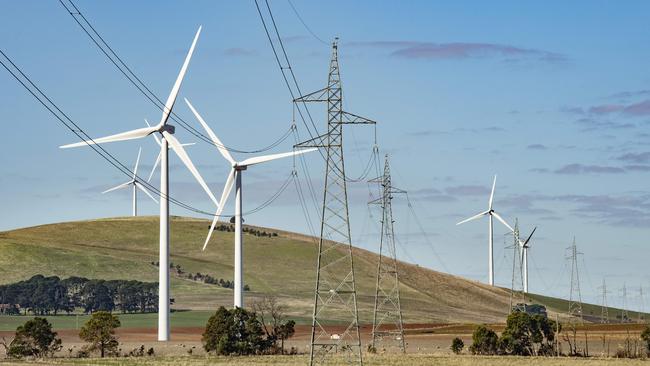Regional planning a must in renewables push
Like city folk who don’t understand where their food comes from, many forget almost 40 per cent of our electricity already comes from renewable sources in regional areas.

When city people visit Australia’s rural and regional areas, they routinely misinterpret what they see.
Many perceive conservative places that evolve slowly; a seemingly unchanging and enduring tableau like a real-life Arthur Streeton painting. Nothing could be further from the truth.
Anyone who grew up in these communities, or understands Australian history, knows how these dynamic places have adapted to so many intense changes over the past 250 years.
Now renewable energy is the latest regionally based industry to be woven into the fabric of these special places.
Like city folk who don’t understand where the food they eat comes from, many forget that almost 40 per cent of our electricity already comes from renewable sources. And that figure is growing all the time.
This renewable energy is distributed across rural and regional parts of Australia, rather than being centralised in a few coal regions.
Like agriculture, renewable energy is rightfully becoming a source of real pride for the many regional communities that produce it for themselves, but largely for their city counterparts.
Coal-burning power stations have had enormous and irreversible impacts on the environment. Thankfully, they are now being retired at record pace. Renewable energy is stepping up to meet the demand. That means building on a large scale.
After decade-long climate wars and (until recently) federal inaction on renewable energy, Australia now has a clear plan – backed by federal and state governments – to shift to renewable energy.
For many of these communities, they are seeing renewable energy projects in their region for the first time.
Research shows community anxiety is highest in the period between when projects get announced and when they are actually built and operating.
We all know change creates uncertainty. Sometimes this can be difficult to judge for communities. Tougher still is when callous political strategists seek to increase the stress and worry of concerned groups with intentional misinformation, simply to seize power over them at the ballot box.
Thankfully, we know the majority will see through these US-style astroturfing campaigns.
Of course, we need to work harder at explaining what the energy transition means for communities, outlining plans, likely impacts and spelling out the benefits to those nearby.
We also need to ensure we are employing local solutions to share the benefits with those who are living through the changes. There is no one-size-fits-all answer to partnering with local communities.
We should not ignore the fact that like any infrastructure project, renewable energy will have a footprint in the local environment. These are real and not often well understood. Nothing can be built without undeniable impacts on the environment. Anyone who tells you they can is lying.
But the starting point for any discussion about renewable energy and the environment is that we are in both a climate crisis and a biodiversity crisis.
There is no time for the false dichotomy of “renewables versus nature”. Treating it as a lazy binary is doing a grave disservice to everybody who has a real interest in solving our climate and nature challenges.
Our planning regimes are generally not fit for purpose. They were designed for our old energy system, and not to support new clean energy projects. Thankfully this is now widely recognised and a lot of reforms are under way to better facilitate a rapid energy transition, provide greater certainty for clean energy investors, local communities and the natural environment with robust environmental impact assessments and decision-making.
Government assessment teams also need better baseline information about many of our threatened species. Decision-makers often know too little about an individual species to make an informed decision about what level of impact might be expected and is acceptable.
Regional planning should give certainty to communities about the where, the what and the when, including what nature restoration actions will be undertaken and providing a framework for industry to collaborate on delivering these.
This CEC is expanding the industry Best Practice Charter – a set of 10 commitments to responsible development made by leading renewable energy companies – to include accountability measures that will bring transparency to the industry’s efforts as well as creating an incentive to continually strive for better outcomes.
We also need a national roundtable of state and federal governments, the renewable energy industry, environment groups and other stakeholders convened to drive reform and collaboration. Planning, Biodiversity and Energy branches of government need to be collaborating on managing these intersecting issues.
This could create a framework for a Planning Reform Initiative tasked with working through the set of issues outlined above.
Renewable energy solves a large chunk of the climate crisis, and stopping the climate crisis relieves an enormous pressure on biodiversity. Renewable energy developers care deeply about the role they can play in both of these challenges.
They haven’t always got that right, and we expect communities and the media to call that out. But there is an enormous amount of effort under way to improve planning regimes, define and demonstrate leading practice in developing projects and articulate what it might mean for a renewable energy project to be “nature positive”.
Only by embracing the scale, importance and complexity of this task will we all succeed.
Kane Thornton is chief executive of the Clean Energy Council



To join the conversation, please log in. Don't have an account? Register
Join the conversation, you are commenting as Logout